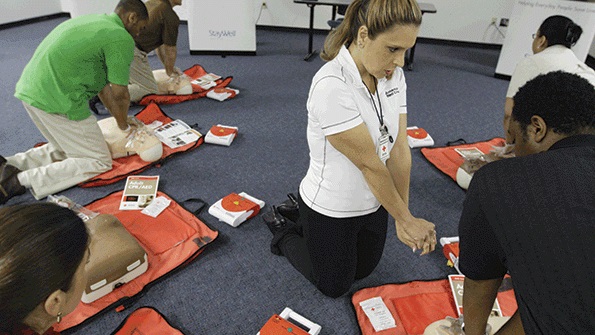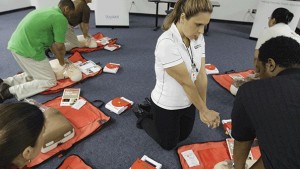
Making Safety Count: Effective Training for the Workplace
Too often and for too many employees, mandatory training is seen as a bother or inconvenience that disrupts a busy workday and results in work piling up. At the end of the training, the employee downloads the digital certification, turns it in and gets back to the job at hand.
But what if the training is on workplace safety? Do we really want employees rushing through a course, instead of focusing on knowledge and ski…lls that may one day prove the difference between life and death on the job?
On-the-job accidents and illnesses continue to present a major issue for companies in the United States. Preliminary numbers for 2013 from the Bureau of Labor Statistics show that 4,405 workers across multiple U.S. industries were killed on the job – an average of 85 each week. Accidents and illness can result in human tragedy, lost manpower and missed production deadlines.
The construction industry, characterized as “high hazard” by OSHA, is an area in which proper safety training is essential. But all industries must consider the quality of their training and ensure that it keeps up with changes and innovations.
The segment of the construction industry involved in the wireless industry is an example in which the growing demand for wireless and broadcast communications continues to spur a dramatic increase in communication tower construction and maintenance. Employees regularly climb towers in excess of 2,000 feet tall, and they do it throughout the year in all weather conditions. OSHA recorded 13 communication tower-related fatalities in 2013, but as more towers are built, that number may well continue to grow each year.
With statistics like these, safety training for employees cannot be a “check the box” experience. The question companies face is how to provide training that enables employees to learn and retain the skills and knowledge they need to respond to a real-world emergency.
For most companies, training starts with OSHA standards that require the employer to train employees in the safety and health aspects of their jobs. Other OSHA standards make it the employer’s responsibility to limit certain job assignments to employees who are “certified,” “competent” or “qualified” –meaning that they have had special previous training, in or out of the workplace. Many companies, unions and other organizations also require employees to successfully complete training recommended by OSHA for worksite, insurance and job-bidding purposes.

